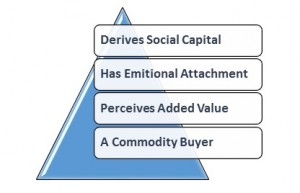We post articles here that we hope will engage and enlighten our clients and colleagues. There is always a great deal of discussion and evolution of thinking in our business consulting space. We hope to stimulate some discussion here.
The following posts and topics are on line – click on the links below or in the margin at the right, or scroll down to see them.
Current Posts
- We have updated our discussion on brand pyramids with a bit on the new Apple Watch and consumers know as “Macolytes”
- A look at failure to follow thru with strategic initiatives, particularly those that are perceived as “big bets“
- A discussion about human biases and their influence on projects and management
- Six simple questions that you should ask throughout any strategic planning exercise or review.
- A brief discussion on those dreaded Mission and Vision Statements that tries to blow thru some of the myths and expose the value of these concise summaries.
- An overview of the many lessons that we have learned while leading very large proposals. We also talk about Capture Planning, and area that is often given scant attention, putting pressure on proposals and introducing risk.
- In the area of strategy development, we have written about why strategies fail and what you can do about it, the five stages of strategic grief, and the logical inconsistencies of Donald Rumsfeld.
- We have addressed an interesting little pyramid that attempts to describe the hierarchy of purchasing decisions and brand loyalty.
- We also look at the changing world of work and the concept of Executive SuperTemps – executive intellectual capital for hire and the new world of “Executive artisans”.
We hope you enjoy these articles and the others in the post and look forward to your comments and suggestions.

